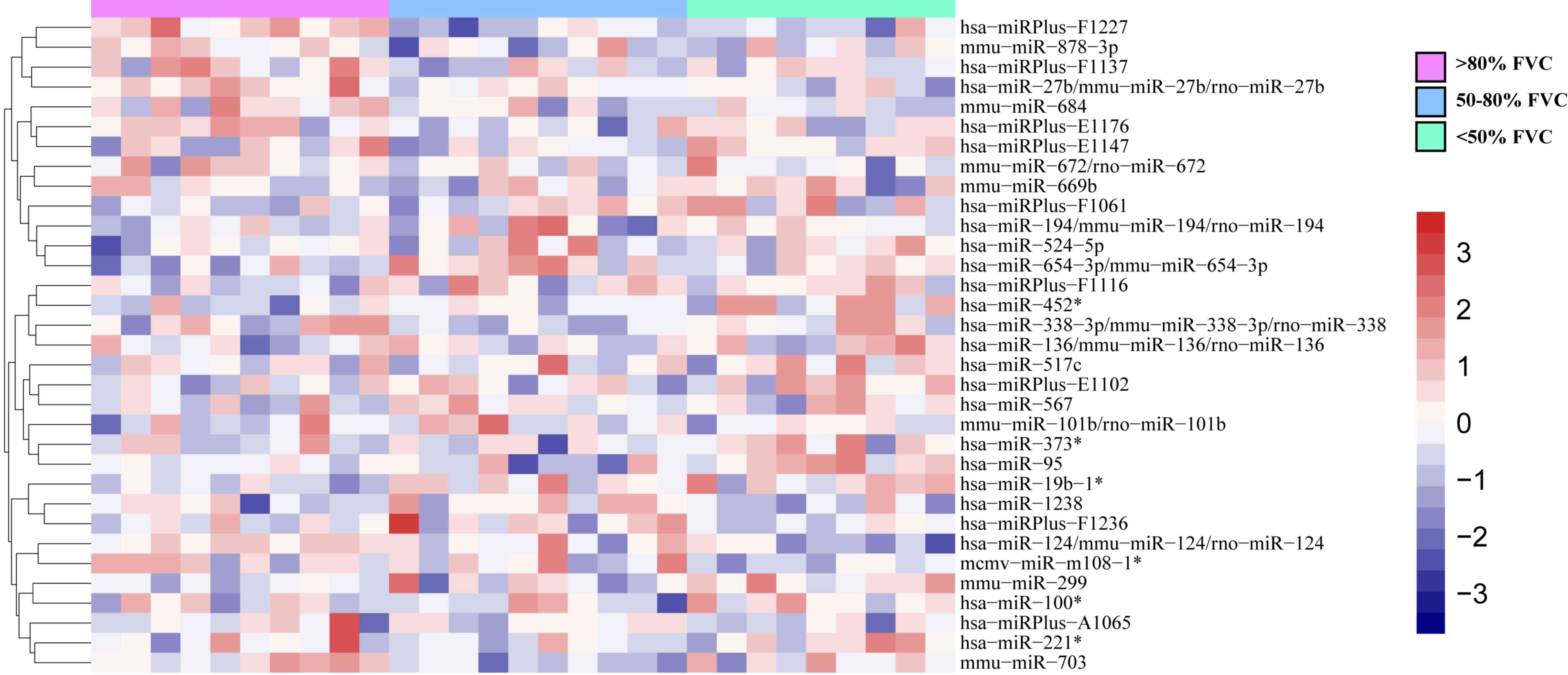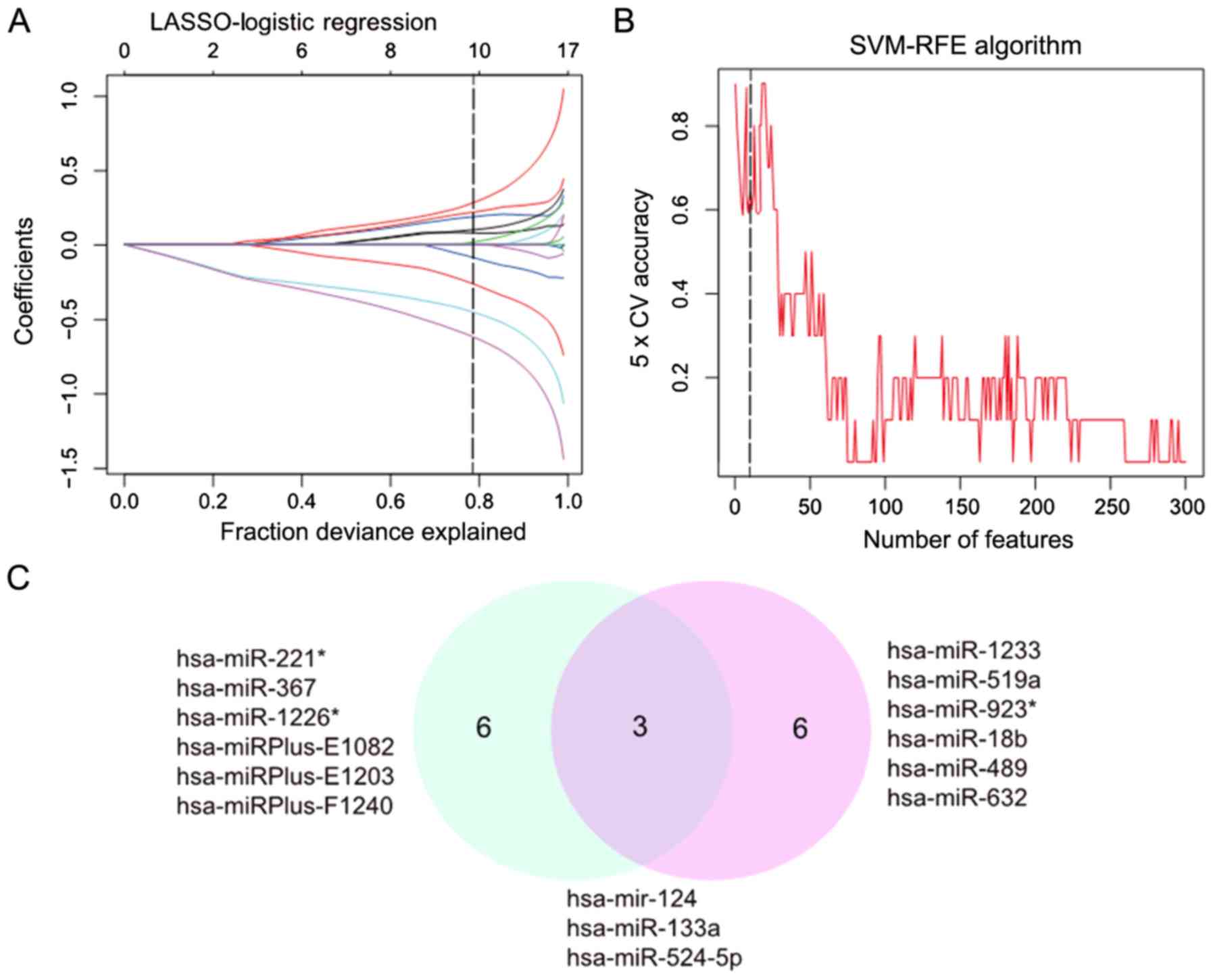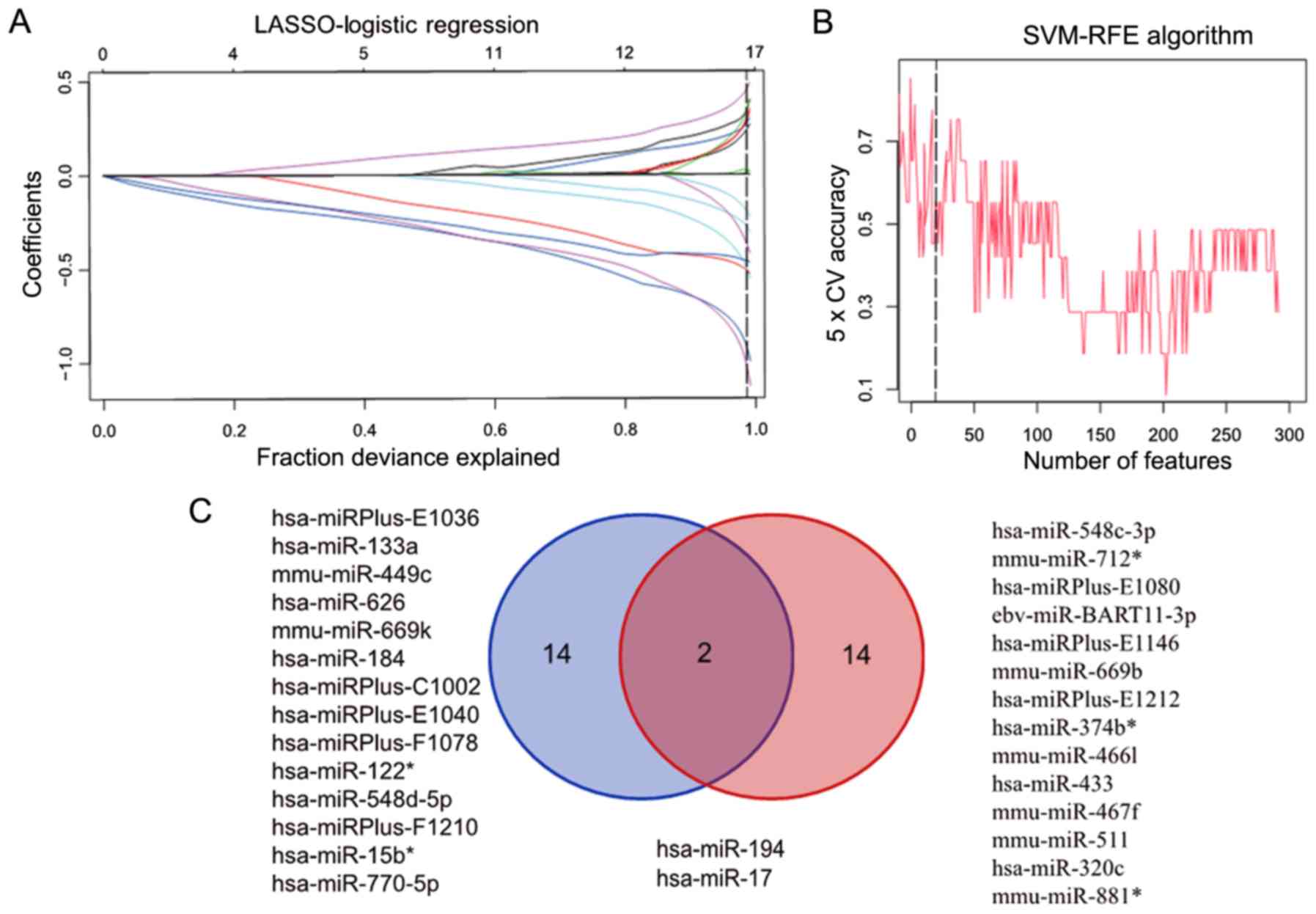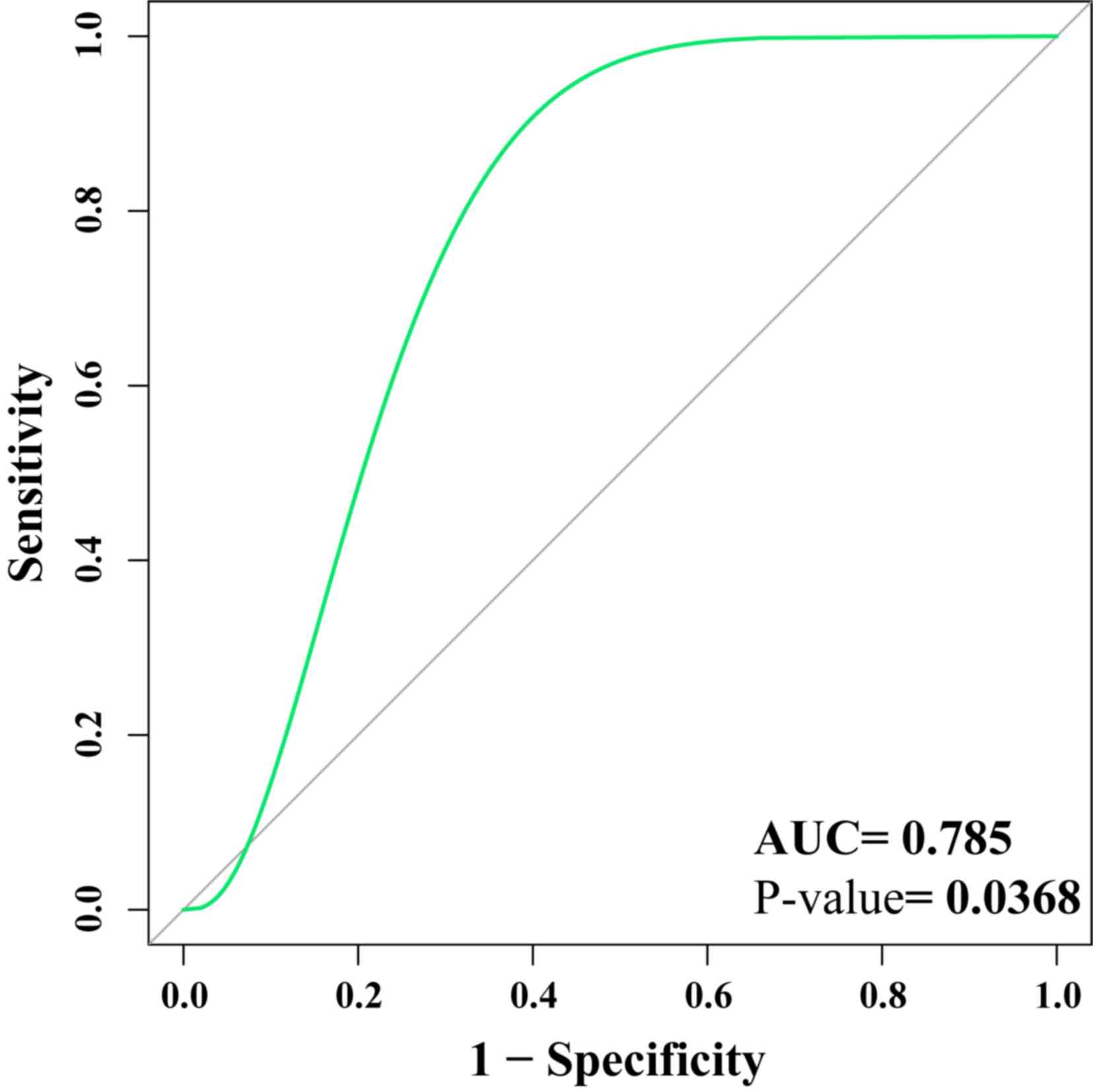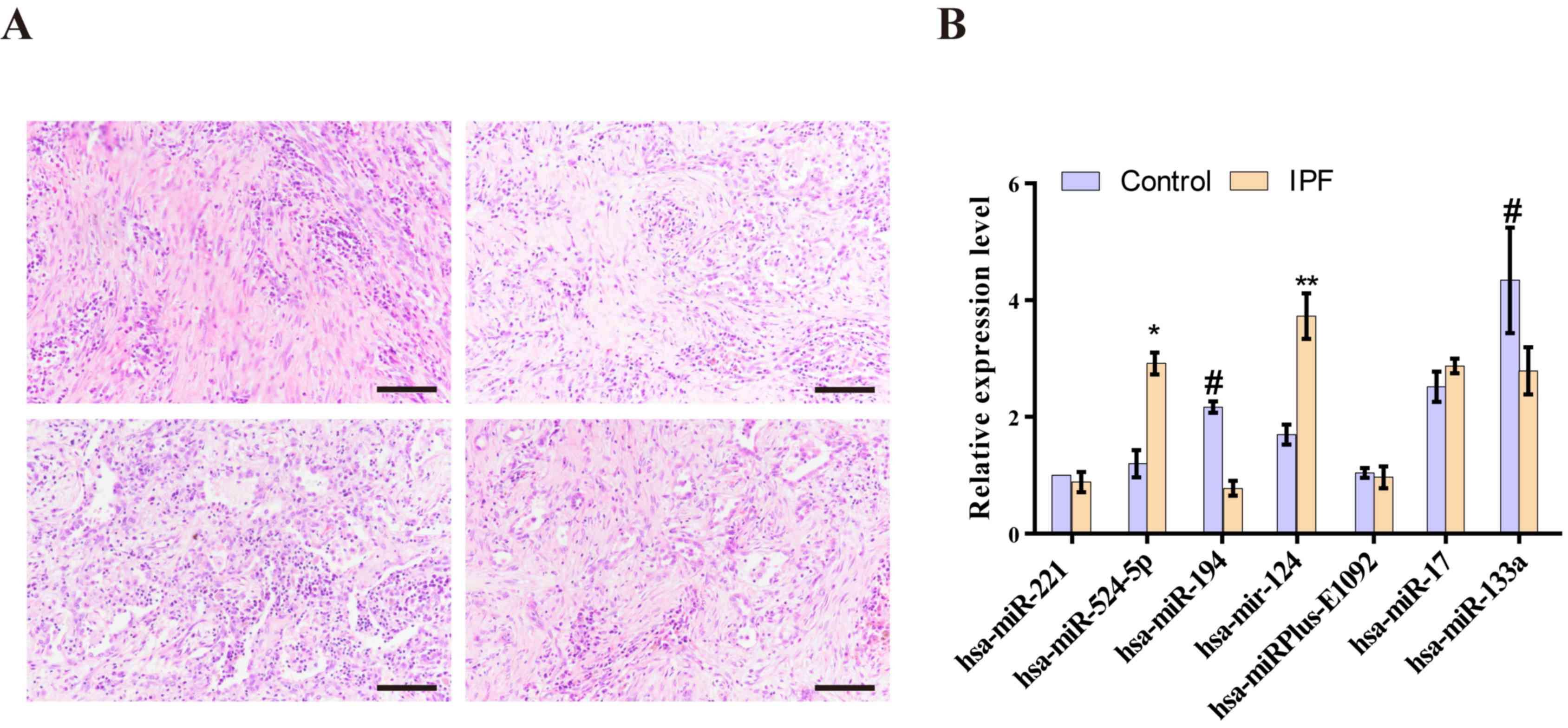|
1
|
Raghu G, Freudenberger TD, Yang S, Curtis
JR, Spada C, Hayes J, Sillery JK, Pope CE II and Pellegrini CA:
High prevalence of abnormal acid gastro-oesophageal reflux in
idiopathic pulmonary fibrosis. Eur Respir J. 27:136–142.
2006.PubMed/NCBI View Article : Google Scholar
|
|
2
|
Wolters PJ, Blackwell TS, Eickelberg O,
Loyd JE, Kaminski N, Jenkins G, Maher TM, Molina-Molina M, Noble
PW, Raghu G, et al: Time for a change: Is idiopathic pulmonary
fibrosis still idiopathic and only fibrotic? Lancet Respir Med.
6:154–160. 2018.PubMed/NCBI View Article : Google Scholar
|
|
3
|
Selman M and Pardo A: Revealing the
pathogenic and aging-related mechanisms of the enigmatic idiopathic
pulmonary fibrosis An integral model. Am J Respir Crit Care Med.
189:1161–1172. 2014.PubMed/NCBI View Article : Google Scholar
|
|
4
|
Antoniou K, Markopoulou K, Tzouvelekis A,
Trachalaki A, Vasarmidi E, Organtzis J, Tzilas V, Bouros E, Kounti
G, Rampiadou C, et al: Efficacy and safety of nintedanib in a Greek
multicentre idiopathic pulmonary fibrosis registry: A
retrospective, observational, cohort study. ERJ Open Res.
6:00172–2019. 2020.
|
|
5
|
Kooshapur H, Choudhury NR, Simon B,
Mühlbauer M, Jussupow A, Fernandez N, Jones AN, Dallmann A, Gabel
F, Camilloni C, et al: Structural basis for terminal loop
recognition and stimulation of pri-miRNA-18a processing by hnRNP
A1. Nat Commun. 9(2479)2018.PubMed/NCBI View Article : Google Scholar
|
|
6
|
Rubio K, Singh I, Dobersch S, Sarvari P,
Günther S, Cordero J, Mehta A, Wujak L, Cabrera-Fuentes H, Chao CM,
et al: Inactivation of nuclear histone deacetylases by EP300
disrupts the MiCEE complex in idiopathic pulmonary fibrosis. Nat
Commun. 10(2229)2019.PubMed/NCBI View Article : Google Scholar
|
|
7
|
Bodempudi V, Hergert P, Smith K, Xia H,
Herrera J, Peterson M, Khalil W, Kahm J, Bitterman PB and Henke CA:
MiR-210 promotes IPF fibroblast proliferation in response to
hypoxia. Am J Physiol Lung Cell Mol Physiol. 307:L283–L294.
2014.PubMed/NCBI View Article : Google Scholar
|
|
8
|
Huang C, Xiao X, Yang Y, Mishra A, Liang
Y, Zeng X, Yang X, Xu D, Blackburn MR, Henke CA and Liu L:
MicroRNA-101 attenuates pulmonary fibrosis by inhibiting fibroblast
proliferation and activation. J Biol Chem. 292:16420–16439.
2017.PubMed/NCBI View Article : Google Scholar
|
|
9
|
Dai WJ, Qiu J, Sun J, Ma CL, Huang N,
Jiang Y, Zeng J, Ren BC, Li WC and Li YH: Downregulation of
microRNA-9 reduces inflammatory response and fibroblast
proliferation in mice with idiopathic pulmonary fibrosis through
the ANO1-mediated TGF-β-Smad3 pathway. J Cell Physiol.
234:2552–2565. 2019.PubMed/NCBI View Article : Google Scholar
|
|
10
|
Kang H: Role of MicroRNAs in TGF-β
signaling pathway-mediated pulmonary fibrosis. Int J Mol Sci.
18(2527)2017.PubMed/NCBI View Article : Google Scholar
|
|
11
|
Pandit KV, Corcoran D, Yousef H,
Yarlagadda M, Tzouvelekis A, Gibson KF, Konishi K, Yousem SA, Singh
M, Handley D, et al: Inhibition and role of let-7d in idiopathic
pulmonary fibrosis. Am J Respir Crit Care Med. 182:220–229.
2010.PubMed/NCBI View Article : Google Scholar
|
|
12
|
Sung J, Loughin C, Marino D, Leyva F,
Dewey C, Umbaugh S and Lesser M: Medical infrared thermal imaging
of canine appendicular bone neoplasia. BMC Vet Res.
15(430)2019.PubMed/NCBI View Article : Google Scholar
|
|
13
|
Friedman J, Hastie T and Tibshirani R:
Regularization paths for generalized linear models via coordinate
descent. J Stat Softw. 33:1–22. 2010.PubMed/NCBI
|
|
14
|
Team RC: R: A language and environment for
statistical computing, 2013.
|
|
15
|
Xia J, Broadhurst DI, Wilson M and Wishart
DS: Translational biomarker discovery in clinical metabolomics: An
introductory tutorial. Metabolomics. 9:280–299. 2013.PubMed/NCBI View Article : Google Scholar
|
|
16
|
Liu W and Wang X: Prediction of functional
microRNA targets by integrative modeling of microRNA binding and
target expression data. Genome Biol. 20(18)2019.PubMed/NCBI View Article : Google Scholar
|
|
17
|
Yu G, Wang LG, Han Y and He QY:
ClusterProfiler: An R package for comparing biological themes among
gene clusters. OMICS. 16:284–287. 2012.PubMed/NCBI View Article : Google Scholar
|
|
18
|
Buglyó G, Magyar Z, Romicsné Görbe É,
Bánusz R, Csóka M, Micsik T, Berki Z, Varga P, Sápi Z and Nagy B:
Quantitative RT-PCR-based miRNA profiling of blastemal Wilms'
tumors from formalin-fixed paraffin-embedded samples. J Biotechnol.
298:11–15. 2019.PubMed/NCBI View Article : Google Scholar
|
|
19
|
Livak KJ and Schmittgen TD: Analysis of
relative gene expression data using real-time quantitative PCR and
the 2(-Delta Delta C(T)) method. Methods. 25:402–408.
2001.PubMed/NCBI View Article : Google Scholar
|
|
20
|
Akiyama N, Hozumi H, Isayama T, Okada J,
Sugiura K, Yasui H, Suzuki Y, Kono M, Karayama M, Furuhashi K, et
al: Clinical significance of serum S100 calcium-binding protein A4
in idiopathic pulmonary fibrosis. Respirology. 25:743–749.
2020.PubMed/NCBI View Article : Google Scholar
|
|
21
|
Carthew RW and Sontheimer EJ: Origins and
mechanisms of miRNAs and siRNAs. Cell. 136:642–655. 2009.PubMed/NCBI View Article : Google Scholar
|
|
22
|
Thum T and Condorelli G: Long noncoding
RNAs and microRNAs in cardiovascular pathophysiology. Circ Res.
116:751–762. 2015.PubMed/NCBI View Article : Google Scholar
|
|
23
|
Lu Y, Zhang T, Shan S, Wang S, Bian W, Ren
T and Yang D: miR-124 regulates transforming growth factor-β1
induced differentiation of lung resident mesenchymal stem cells to
myofibroblast by repressing Wnt/β-catenin signaling. Dev Biol.
449:115–121. 2019.PubMed/NCBI View Article : Google Scholar
|
|
24
|
Panganiban RP, Pinkerton MH, Maru SY,
Jefferson SJ, Roff AN and Ishmael FT: Differential microRNA
epression in asthma and the role of miR-1248 in regulation of IL-5.
Am J Clin Exp Immunol. 1:154–165. 2012.PubMed/NCBI
|
|
25
|
Chen SM, Chou WC, Hu LY, Hsiung CN, Chu
HW, Huang YL, Hsu HM, Yu JC and Shen CY: The effect of microRNA-124
overexpression on anti-tumor drug sensitivity. PLoS One.
10(e0128472)2015.PubMed/NCBI View Article : Google Scholar
|
|
26
|
Liang YJ, Wang QY, Zhou CX, Yin QQ, He M,
Yu XT, Cao DX, Chen GQ, He JR and Zhao Q: MiR-124 targets Slug to
regulate epithelial-mesenchymal transition and metastasis of breast
cancer. Carcinogenesis. 34:713–722. 2013.PubMed/NCBI View Article : Google Scholar
|
|
27
|
Liang YJ, Wang QY, Zhou CX, Yin QQ, He M,
Yu XT, Cao DX, Chen GQ, He JR and Zhao Q: miR-124 targets Slug to
regulate epithelial-mesenchymal transition and metastasis of breast
cancer. Carcinogenesis. 34:713–722. 2013.PubMed/NCBI View Article : Google Scholar
|
|
28
|
Jin J, Zhai HF, Jia ZH and Luo XH: Long
non-coding RNA HOXA11-AS induces type I collagen synthesis to
stimulate keloid formation via sponging miR-124-3p and activation
of Smad5 signaling. Am J Physiol Cell Physiol. 317:C1001–C1010.
2019.PubMed/NCBI View Article : Google Scholar
|
|
29
|
Nguyen PNN, Choo KB, Huang CJ, Sugii S,
Cheong SK and Kamarul T: MiR-524-5p of the primate-specific C19MC
miRNA cluster targets TP53IPN1-and EMT-associated genes to regulate
cellular reprogramming. Stem Cell Res Ther. 8(214)2017.PubMed/NCBI View Article : Google Scholar
|
|
30
|
Eftekharian MM, Komaki A, Mazdeh M,
Arsang-Jang S, Taheri M and Ghafouri-Fard S: Expression profile of
selected microRNAs in the peripheral blood of Multiple Sclerosis
patients: A multivariate statistical analysis with ROC curve to
find new biomarkers for fingolimod. J Mol Neurosci. 68:153–161.
2019.PubMed/NCBI View Article : Google Scholar
|
|
31
|
Zhao K, Wang Q, Wang Y, Huang K, Yang C,
Li Y, Yi K and Kang C: EGFR/c-myc axis regulates TGFβ/Hippo/Notch
pathway via epigenetic silencing miR-524 in gliomas. Cancer Lett.
406:12–21. 2017.PubMed/NCBI View Article : Google Scholar
|
|
32
|
Wang X, Cheng Z, Dai L, Jiang T, Jia L,
Jing X, An L, Wang H and Liu M: Knockdown of long noncoding RNA H19
represses the progress of pulmonary fibrosis through the
transforming growth factor β/Smad3 pathway by regulating microRNA
140. Mol Cell Biol. 39:e00143–00119. 2019.PubMed/NCBI View Article : Google Scholar
|
|
33
|
Xu Z, Guo B, Chang P, Hui Q, Li W and Tao
K: The differential expression of miRNAs and a preliminary study on
the mechanism of miR-194-3p in Keloids. Biomed Res Int.
2019(8214923)2019.PubMed/NCBI View Article : Google Scholar
|
|
34
|
Hu S, Yuan Y, Song Z, Yan D and Kong X:
Expression profiles of microRNAs in drug-resistant non-small cell
lung cancer cell lines using microRNA sequencing. Cell Physiol
Biochem. 51:2509–2522. 2018.PubMed/NCBI View Article : Google Scholar
|
|
35
|
Peng Y, Zhang X, Lin H, Deng S, Huang Y,
Qin Y, Feng X, Yan R, Zhao Y, Cheng Y, et al: Inhibition of miR-194
suppresses the Wnt/β-catenin signalling pathway in gastric cancer.
Oncol Rep. 40:3323–3334. 2018.PubMed/NCBI View Article : Google Scholar
|
|
36
|
Yang F, Xiao Z and Zhang S: Knockdown of
miR-194-5p inhibits cell proliferation, migration and invasion in
breast cancer by regulating the Wnt/β-catenin signaling pathway.
Int J Mol Med. 42:3355–3363. 2018.PubMed/NCBI View Article : Google Scholar
|
|
37
|
Miao J, Wang W, Wu S, Zang X, Li Y, Wang
J, Zhan R, Gao M, Hu M, Li J and Chen S: MiR-194 suppresses
proliferation and migration and promotes apoptosis of osteosarcoma
cells by targeting CDH2. Cell Physiol Biochem. 45:1966–1974.
2018.PubMed/NCBI View Article : Google Scholar
|
|
38
|
Hill C, Li J, Liu D, Conforti F, Brereton
CJ, Yao L, Zhou Y, Alzetani A, Chee SJ, Marshall BG, et al:
Autophagy inhibition-mediated epithelial-mesenchymal transition
augments local myofibroblast differentiation in pulmonary fibrosis.
Cell Death Dis. 10(591)2019.PubMed/NCBI View Article : Google Scholar
|
|
39
|
Milara J, Navarro R, Juan G, Peiró T,
Serrano A, Ramón M, Morcillo E and Cortijo J:
Sphingosine-1-phosphate is increased in patients with idiopathic
pulmonary fibrosis and mediates epithelial to mesenchymal
transition. Thorax. 67:147–156. 2012.PubMed/NCBI View Article : Google Scholar
|
|
40
|
Senoo T, Hattori N, Tanimoto T, Furonaka
M, Ishikawa N, Fujitaka K, Haruta Y, Murai H, Yokoyama A and Kohno
N: Suppression of plasminogen activator inhibitor-1 by RNA
interference attenuates pulmonary fibrosis. Thorax. 65:334–340.
2010.PubMed/NCBI View Article : Google Scholar
|
|
41
|
Parker MW, Rossi D, Peterson M, Smith K,
Sikström K, White ES, Connett JE, Henke CA, Larsson O and Bitterman
PB: Fibrotic extracellular matrix activates a profibrotic positive
feedback loop. J Clin Invest. 124:1622–1635. 2014.PubMed/NCBI View Article : Google Scholar
|
|
42
|
Liu G, Friggeri A, Yang Y, Milosevic J,
Ding Q, Thannickal VJ, Kaminski N and Abraham E: MiR-21 mediates
fibrogenic activation of pulmonary fibroblasts and lung fibrosis. J
Exp Med. 207:1589–1597. 2010.PubMed/NCBI View Article : Google Scholar
|
|
43
|
Makiguchi T, Yamada M, Yoshioka Y, Sugiura
H, Koarai A, Chiba S, Fujino N, Tojo Y, Ota C, Kubo H, et al: Serum
extracellular vesicular miR-21-5p is a predictor of the prognosis
in idiopathic pulmonary fibrosis. Respir Res.
17(110)2016.PubMed/NCBI View Article : Google Scholar
|
|
44
|
Chao CM, Carraro G, Rako Z, Kolck J, Morty
RE, Rottier RJ and Bellusci S: MiR-154 controls branching
morphogenesis and alveologenesis in lung development involving
Tgf-β signaling. Eur Respir J. 50 (Suppl 61)(OA3229)2017.
|
|
45
|
Milosevic J, Pandit K, Magister M,
Rabinovich E, Ellwanger DC, Yu G, Vuga LJ, Weksler B, Benos PV,
Gibson KF, et al: Profibrotic role of miR-154 in pulmonary
fibrosis. Am J Respir Cell Mol Biol. 47:879–887. 2012.PubMed/NCBI View Article : Google Scholar
|















